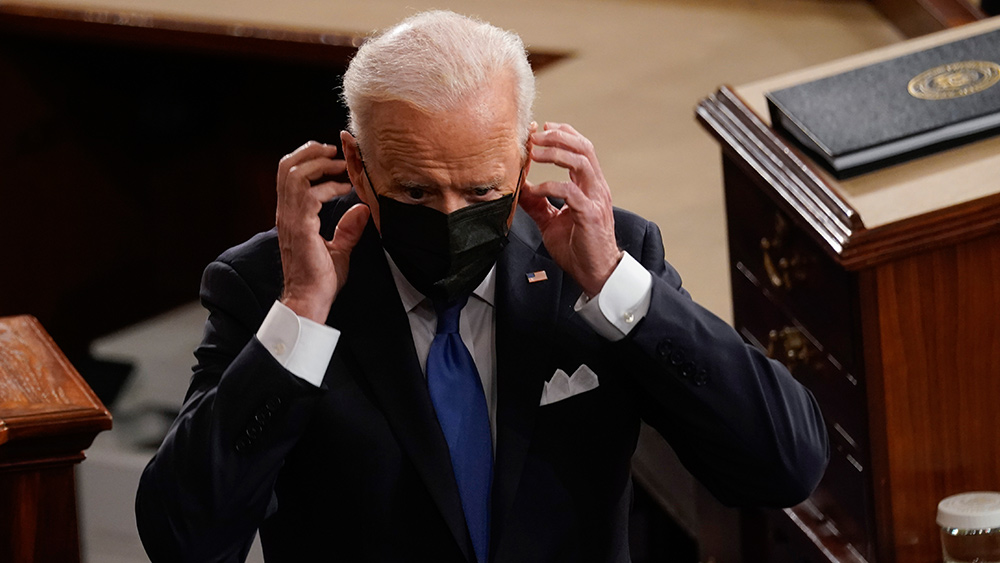Global supply chain disaster brewing as wide swaths of manufacturing CLOSED in China due to pandemic-related shutdowns
The world's supply chain was severely disrupted by lengthy lockdowns during the COVID-19 pandemic imposed by almost every nation on earth, but the lockdowns that hurt the worst were those in China.
That's because the West long ago surrendered much of its manufacturing capability to China where labor is cheaper and the Chinese government cares next to nothing about environmental concerns.
But now, even as the global supply chain is teetering on the edge of collapse, it's about to get even worse,
according to a report by The Wall Street Journal -- and again, COVID-19 is the culprit:
Manufacturers are struggling to keep some of their China operations going as extended and widening Covid-19 lockdowns choke off supplies and clog up truck routes and ports, heaping more pressure on the stretched global supply chain.
Stringent government measures to contain the country’s Covid-19 outbreak, the worst in more than two years, are locking down tens of millions of people, mostly in and around the industrial heartland of Shanghai. The curbs are keeping many workers at home, restricting output at some factories and closing others, including component makers for Apple Inc. and Tesla Inc.
The paper said that Tesla suspended work at its manufacturing plant in Shanghai on March 28 and the company still has not announced a date for restarting it, according to sources. As such, the electric vehicle maker said that it has implemented COVID -19 controls and requirements per the Chinese government and is also setting work arrangements.
Meanwhile, Volkswagen AG announced that a pair of its factories in China -- one in Shanghai and the other in the northeastern province of Jilin -- were also closed recently and that the situation is day-to-day.
"German conglomerate Thyssenkrupp AG previously said it hoped to restart production of auto components, including powertrains and batteries, at its Shanghai plant this week, but is now targeting April 15," according to the WSJ.
And some Taiwanese electronic manufacturers are beginning to shift orders marked urgent out of China to other parts of the world. As a backup, they are also planning to ship products that are partially assembled from Taiwan to Southeast Asian and North American companies to be finished, industry executives said.
"Even companies that have brought workers to live onsite to keep operations going are experiencing production difficulties because suppliers have shut down or component deliveries can’t get through, said Harald Kumpfert, a member of the European Union Chamber of Commerce in China who represents businesses operating in the country’s northeast," WSJ reported.
All of this, as well as shipping disruptions coupled with further production delays, are all contributing to massive shortages of nearly all products and commodities. In addition, there have been long delays moving goods through the Port of Shanghai; there, shipments have fallen off some 40 percent in comparison to pre-lockdown levels. Cargo is now being diverted to another port nearby in Ningbo, which has helped mitigate some of the delay, according to shipping executives.
China's ongoing COVID lockdowns come amid various other global disruptions, including the conflict in eastern Europe and domestic policies in the United States.
"China’s increasing problems come
as the global economy and markets are dealing with the Russian invasion of Ukraine, rising inflation and the prospect of more assertive actions by the Federal Reserve to curb inflation," the WSJ reports.
"Mainland Chinese stocks endured their worst quarter in years in the three months through March, in part reflecting concerns that China’s antipandemic measures would hold back economic expansion and dent consumer demand. Some economists have cut their forecasts for Chinese growth this year," the paper added.
The
shortages that we've seen in the U.S. are only just beginning. The worst -- and things
will get much worse -- is yet to come.
Sources include:
WSJ.com
Bubble.news












